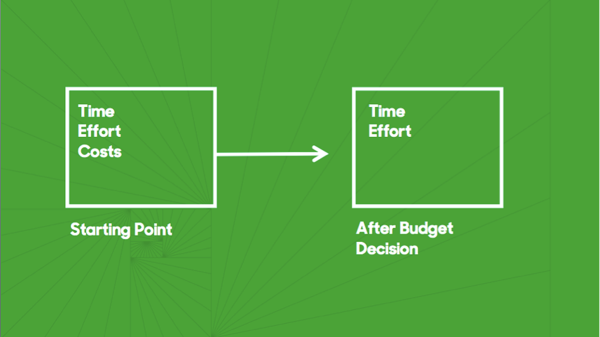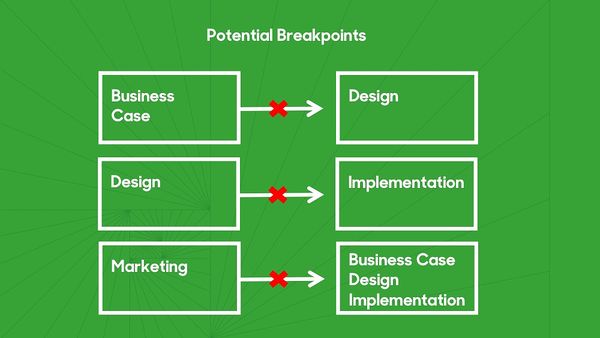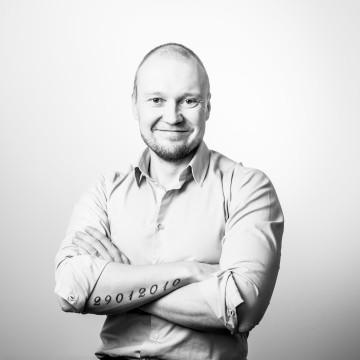 Yes, it's yet another Venn diagram
Yes, it's yet another Venn diagram
The world is accelerating and gaining in complexity. There is more of everything now, especially information. The wealth of choices we have in our everyday lives sometimes makes finding the optimal products and services to fulfill our needs a challenge.
There are loads of services that excel in technical implementation, but few people know of them. There are ones that ride their fancy brand into the sunset, but really offer very little to the user.
A truly great service always has a great brand. A great brand is never an accident or a byproduct of the UX design process. A great brand is a combination of branding, marketing and go-to-market strategy and it ensures that people can form an emotional connection to the service and that the service reaches the right audience from day one.
Faster, iterative marketing
Like software development, marketing is becoming an iterative process:
- Create assumptions and plan
- Perform initial research
- Get real-life data
- Adjust plan accordingly
The clock speed for branding and marketing is getting faster, enabling brand building on a completely new level of speed and agility. Experiments are run in hours or days - not weeks or months. And by experiments we are not referring to A/B-testing. Often, a six-month newspaper or TV campaign is really not what the doctor ordered. Running rapid experiments on social media and websites or at physical locations might be the right solution, especially if the campaigns can be quickly adjusted when problems arise or gold is struck.
Say we’re launching a service we assumed would be used primarily by teenagers, but ends up appealing to seniors, adjustments have to be made to the design as well as the technical solutions employed. The brand and marketing also need to play ball and react.
Uncharted territory
Let’s take a step back. The three main things to consider when doing something new: time, effort and costs.

In many companies, getting a large budget for extending an existing service is easier than a smaller budget for a new service. The thinking is that the investment in an existing business is less risky, but it also yields smaller rewards. New business has much higher risks, but also potentially greater rewards.
Once the decision has been made to invest in something new, money is no longer the primary issue – it’s time and effort. In other words: how fast can we get something new to customers and where do we find the people to make it - with the latter intimately tied to the former. Top performers are already tied to business-critical projects that consume more than their allotted time, so even if you succeed in finding the right people, some are going to be tied to previous commitments. Especially for larger organizations, getting a project team together is no small feat. There’s a hell of a lot of syncing to do. It’s a hard calendar puzzle to crack and major source for inertia. Often building a new service requires experts from business, marketing, technology and design, from inside and outside the company. A fairly standard case might involve a business consultancy firm, a marketing agency, a design shop, a tech company and a few others.
That’s quite a mix.

Chances are great that somewhere along the line communication will become garbled and problems in critical cut over points will ensue - from business case to design, from design to implementation and from marketing to anything. There are too many business plans without a technology point of view or nice visual designs without a clear user journey and experience. Or a great service missing a brand that makes it lovable. How the hell do we make it work? As we’ve seen, there are quite a few factors to take into account, but fear not: there’s a new method in town. End-to -end service creation using all the necessary competences.
The process has three main phases.
1. Concepting and branding.
Concepting = business case + service design + MVP contentBranding = initial brand + marketing plan + go-to-market strategy
In this phase we gather as much information as possible from potential users. We create wireframes. We make important decisions about tech that have a major impact on implementation estimates. Words like native, hybrid, React Native, Elm, Cycle.js or Xamarin (maybe not) will be thrown around.
2. Implementation
We create the first version of the service using appropriate web or mobile technologies, UX design, analytics, etc. This is the grunt phase of the project, where earlier plans and decisions start to take shape. The team works through the backlog and, sprint by sprint, the MVP is formed.
3. MVP release
In this phase, the service is released to the wild and all the previous work is put to a real test. Once people start using the service start, the analytics start to gather data on how it’s used and by whom. The brand and marketing team finally gets some first-hand intelligence on how the initial plan is working and is able to iterate the plan.

The whole process may last one to three months and a few of the key people should be involved throughout the duration to ensure continuity: project lead, tech lead, design lead and/or brand lead. The core team from the customer side participates and learns all through the project, so the eventual handover goes as smoothly as possible.
Does all this imply that you are locked to a single vendor? Definitely not. As long as the company that owns the service also owns the rights to all the material produced in the project, a handover of any part can be made at any time.
What’s the point?
The point is: the next time you plan to create a new service, think about whether anyone will ever know about it and could it be released in a fraction of the time you originally planned.
 Jussi HacklinVice President, Helsinki
Jussi HacklinVice President, Helsinki

